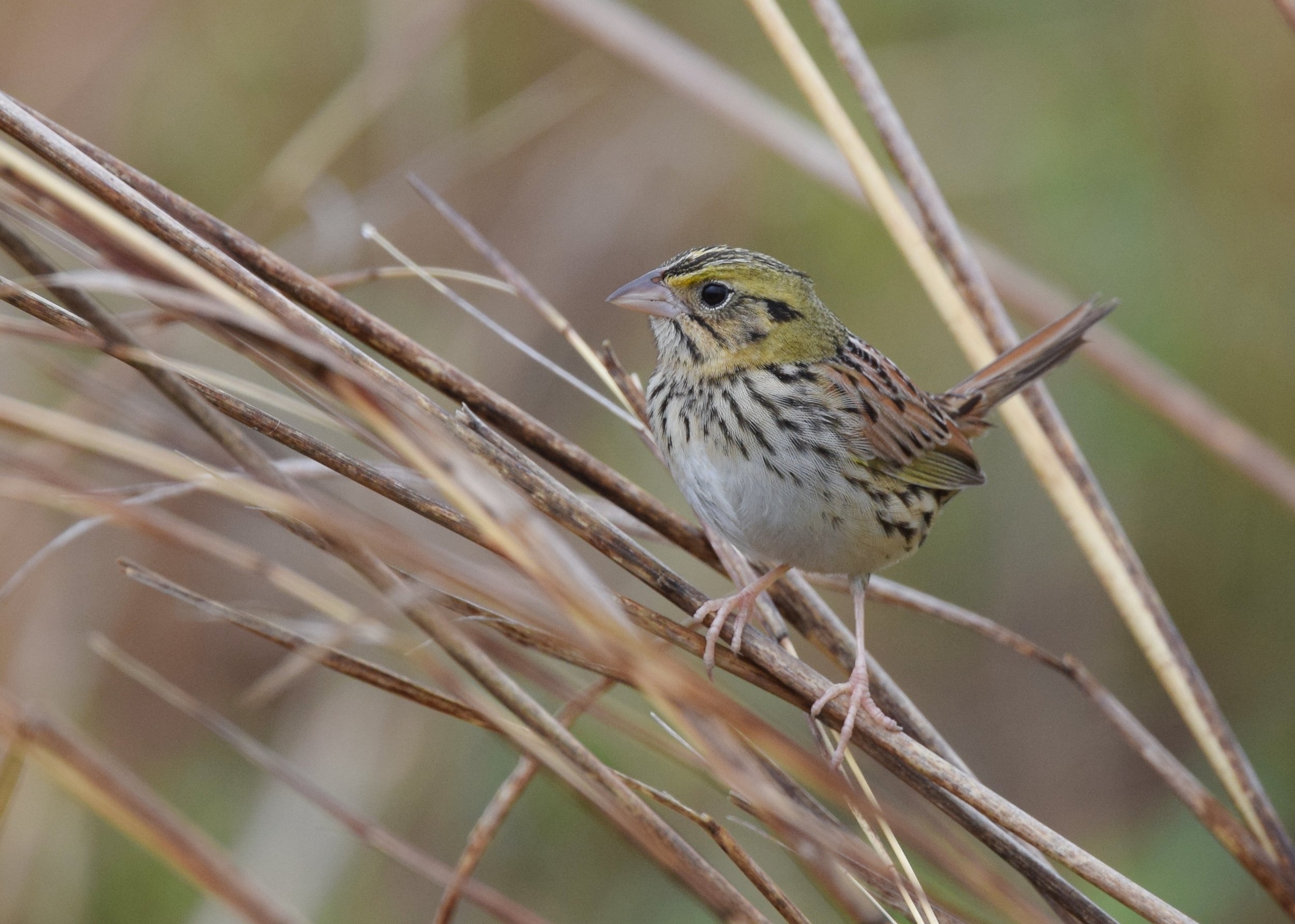This new mini-series highlights the fascinating and marvelous ecology of grassland bird nesting, written by Madison Audubon education director Carolyn Byers. Click here for all Into the Nest posts.
Last week we explored the hidden world within the tallgrass prairie, and discovered how varied the structure of grassland habitat can be. We learned about the habitat preferences of our Wisconsin grassland birds, and learned about the effects that the landscape as a whole can have on habitat selection. This week we’ll focus on how a bird acquires a territory and a mate.
The lovely Schurch-Thompson Prairie is flush with color (and no doubt nesting birds!). Photo by Joshua Mayer
Territories are used for a variety of activities, and their size can vary dramatically depending on their function. A territory held by a colonial seabird may only be large enough for the bird’s nest, and all other activities would take place outside of the territory. Territories may be used only for mating displays: these are the leks of prairie chickens or the dancing grounds of American woodcock. Other birds may hold territories large enough to encompass all of the resources they will need throughout the season. They may be carefully defended year round, or held only for part of the year. Birds typically exclude only their own species from their territory, but may work to defend it from other species too.
Not a prairie. But a good example of small territories used only for nest placement in albatross colonies. Photo by USFWS Pacific Region
The size of territories defended by males is greatly affected by the mating system of each bird. Species that are extremely polygamous, where one male may mate with the majority of females, typically only defend a territory large enough for ritualized displaying and mating. These males provide no parental care, and therefore do not need a territory that will support young. Think prairie chickens and American woodcock. Males that are socially monogamous, who pair with one female and help to raise their young, defend a territory that is large enough to provide food and a nesting site for the young until they fledge. Henslow’s sparrow is a good example of this. Polygamous males that provide parental care and mate with more than one female have the largest territories, in order to provide enough food and nest sites for all. Habitat quality also affects territory size for species that rely on their territory for foraging. High quality habitat may provide enough food in a smaller area than low quality habitat.
Two males compete to see which is most fit, and females wait in the background assessing their options. Prairie chickens are grassland obligates that nest in central Wisconsin. Photo by Don Henise
In most species of birds that defend territories, males compete for choice territories and choose the highest quality territory their status will allow. Males typically use song and displays to establish their territories, and rarely engage in physical conflicts. It is energetically costly to spend time during the day singing. That is time that can’t be spent foraging for food or preening, and all of that singing makes these birds more conspicuous to predators. Males that are healthy enough to sing longer and louder than their competitors and still find enough food to eat while evading predators are extremely fit. While singing may just sound beautiful to us, it is actually a way for these birds to display to their competitors and potential mates how strong and healthy they are.
Males spend some time singing from the middle of their territory, but also sing and display along territory edges. Two or three males may meet at their territory boundaries and sing back and forth to each other. This is called counter-singing, and is an easy way for humans to learn where territory edges are. Look for this the next time you’re out birding!
An eastern meadowlark has a lot to sing about. Photo by Patrick Ready
Females make their mate selections based on territory quality, and the quality of male displays. Choosing the fittest males ensure that their chicks will inherit strong genes, and that their home territory will have a steady food supply.
Read more about the behaviors of three of Wisconsin’s coolest grassland birds: bobolink, Henslow’s sparrow, and northern harrier.
Photos above: bobolink by Scott Heron; Henslow's sparrow by Andy Reago & Chrissy McClarren; northern harrier by Arlene Koziol
* * * * * * * * * * * * * * * * * * * * * * * *
Dickcissels are a beautiful, migratory grassland bird that benefits from the Migratory Bird Treaty Act. Photo by Kelly Colgan Azar
This summer, to celebrate Year of the Birdand 100 years of bird conservation under the Migratory Bird Treaty Act, we’ll be posting regular articles about grassland bird nesting ecology. My M.S. thesis focused on grassland bird nesting ecology, and I’m excited to share my knowledge—and stories from the field- with you! We’ll go into the nest to learn about chick behavior, adult sleep habits, feeding and fledging. We’ll discuss predation and learn about how adult birds respond to different predators. You’ll get to see beautiful photos of nests, eggs, and chicks, as well as video footage straight from the nest! Best of all, the next time you’re out hiking in your favorite Wisconsin prairie, you’ll feel a bit closer to the birds you love.
If you’re interested in reading more and can’t wait for the next post, you can read more about my thesis work here.
Stay tuned for our next edition of Into the Nest, coming soon!
Written by Carolyn Byers, Madison Audubon education director
Cover photo by Joshua Mayer













